Trail Restoration at Knoxville Management Area

Tuleyome is leading a pair of projects to reduce erosion, improve water quality, improve access and recreational opportunities, and protect cultural resources in Berryessa Snow Mountain National Monument’s Knoxville Management Area. The Management Area, midway between Lake Berryessa and Clear Lake on the south side of Berryess Knoxville Road, is popular year-round with off-highway vehicle (OHV) users. There are nearly 100 miles of legal OHV trails in this area, which connect to many more legal trails to the north in the remote uplands.
Funded by Lake Berryessa Watershed Improvement Program (Napa County Measure A) and California State Parks and Recreation's Off-Highway Motor Vehicle Recreation Division's Grants and Cooperative Agreements Program, these combined projects will:
(1) address severe fire damage and associated erosion on two sections of the Bureau of Land Management’s Knoxville Management Area trails, Cedar Creek Trail and a portion of the main trail.
and
(2) stabilize a failed dam on the adjacent McLaughlin Reserve.
All work will be within the Berryessa Snow Mountain National Monument.
The surrounding landscape was scorched by fires in 2015 and in 2020. Major earthwork to popular trail sections and stabilize water crossings is necessary. Volunteers will be solicited along the way to help with invasive weed control, dispersing native plant seeds, and erosion control at water crossings. The project will stabilize the trails for long-term use while minimizing eroded sediment getting to downstream creeks and Lake Berryessa. In addition to the natural and cultural resource benefits, the work will increase recreational opportunities, increase the safety of these activities, and bring volunteers together to enhance, restore, and enjoy the land.
Tuleyome is grateful to continue and strengthen our partnerships with Napa County, Bureau of Land Management, University of California at Davis, and the OHV community on these efforts.
Contact Nate (nlillge@tuleyome.org) if you would like more information or are interested in volunteering at the site.

July 13, 2023 Update
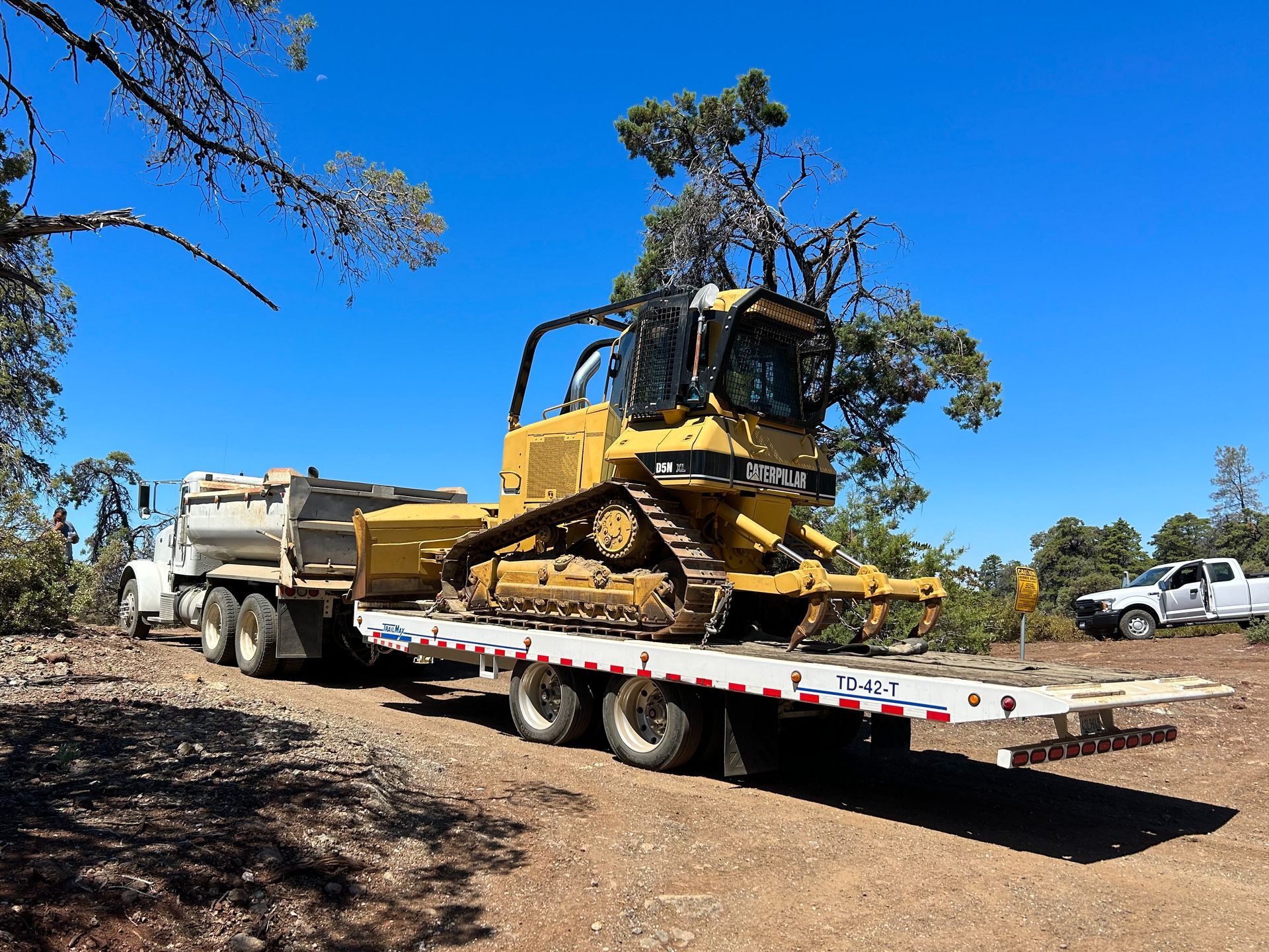
Work started on the Cedar Creek Trail on July 10 – the anniversary of Berryessa Snow Mountain National Monument! The following day, July 11, work began on the main trail. These projects address fire damage and the associated erosion and improve each trail to protect natural and cultural resources. Our work will also decrease the amount of maintenance required in the future. The Cedar Creek Trail is highly eroded and nearly impassible at points while the main trail received regular grading.
Heavy machinery will be on site for 3 to 4 weeks. Work is limited to the within the “trail prism” to not impact the surrounding resources. As part of the project, Tuleyome and our partners underwent cultural sensitivity training to understand the process if any artifacts are discovered. Tribal representatives are monitoring our work.
The work will not only improve the trails for OHV use, but it will also decrease the erosion caused by OHV use. Structures are being added to usher water off the trail and prevent it from creating erosion gullies. Erosion gullies form on trails when surface water is concentrated across unprotected ground and washes away soil. In a natural setting, erosion is limited by vegetation which holds on to soil and rocks. However, on trails there is little to no vegetation to hold onto the soil and increase absorption. This channelization of water is lessened on OHV (and hiking) trails by adding structures – in this case rolling dips, swales, and armored crossings. By decreasing and limiting erosion, water quality downstream is increased.
By the time the work is completed, OHV access (and enjoyment) will be increased, erosion decreased, water quality increased, and time and money needed to maintain the trails will be decreased. A win-win-win-win situation!
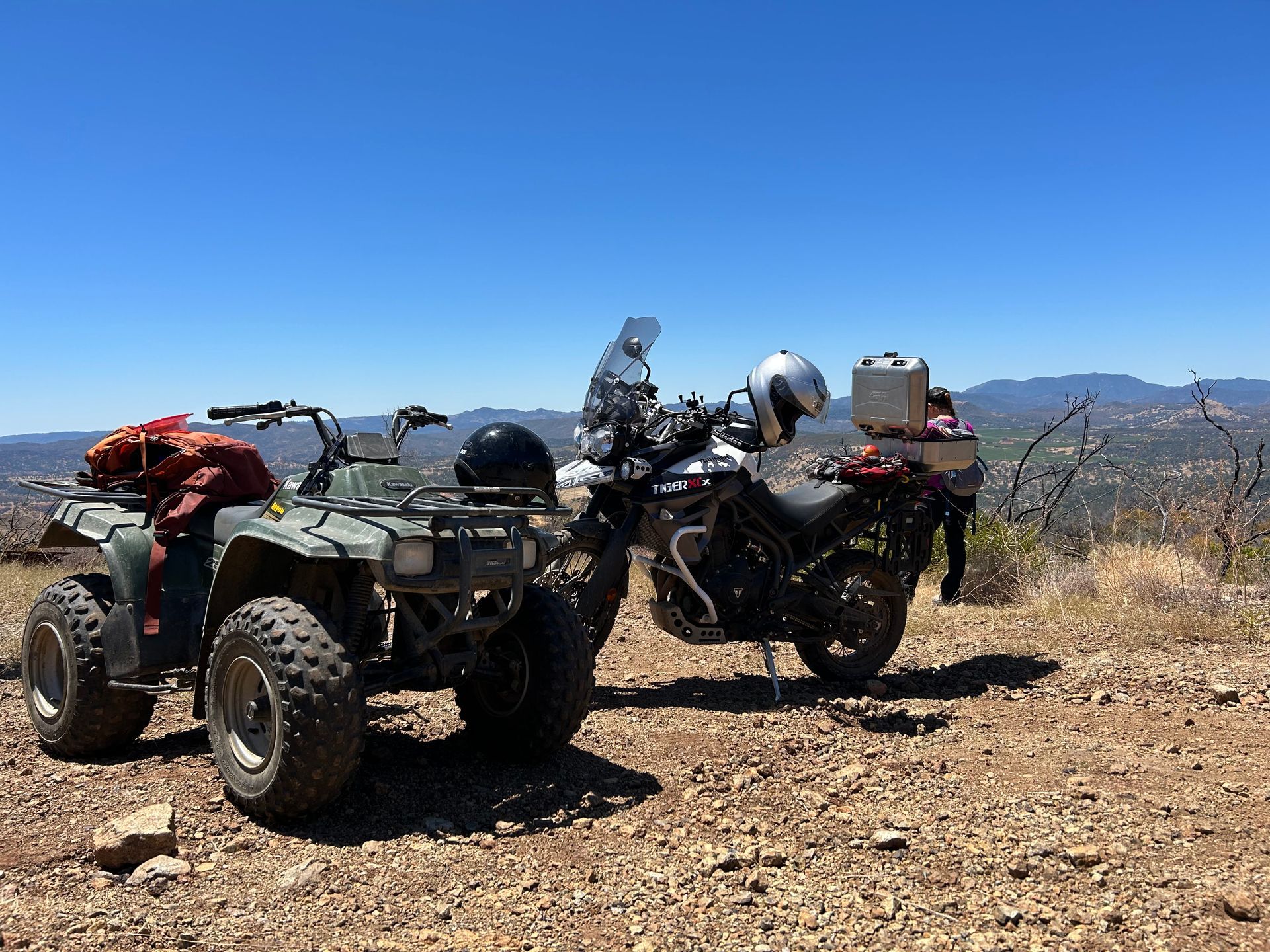
July 26, 2023 Update
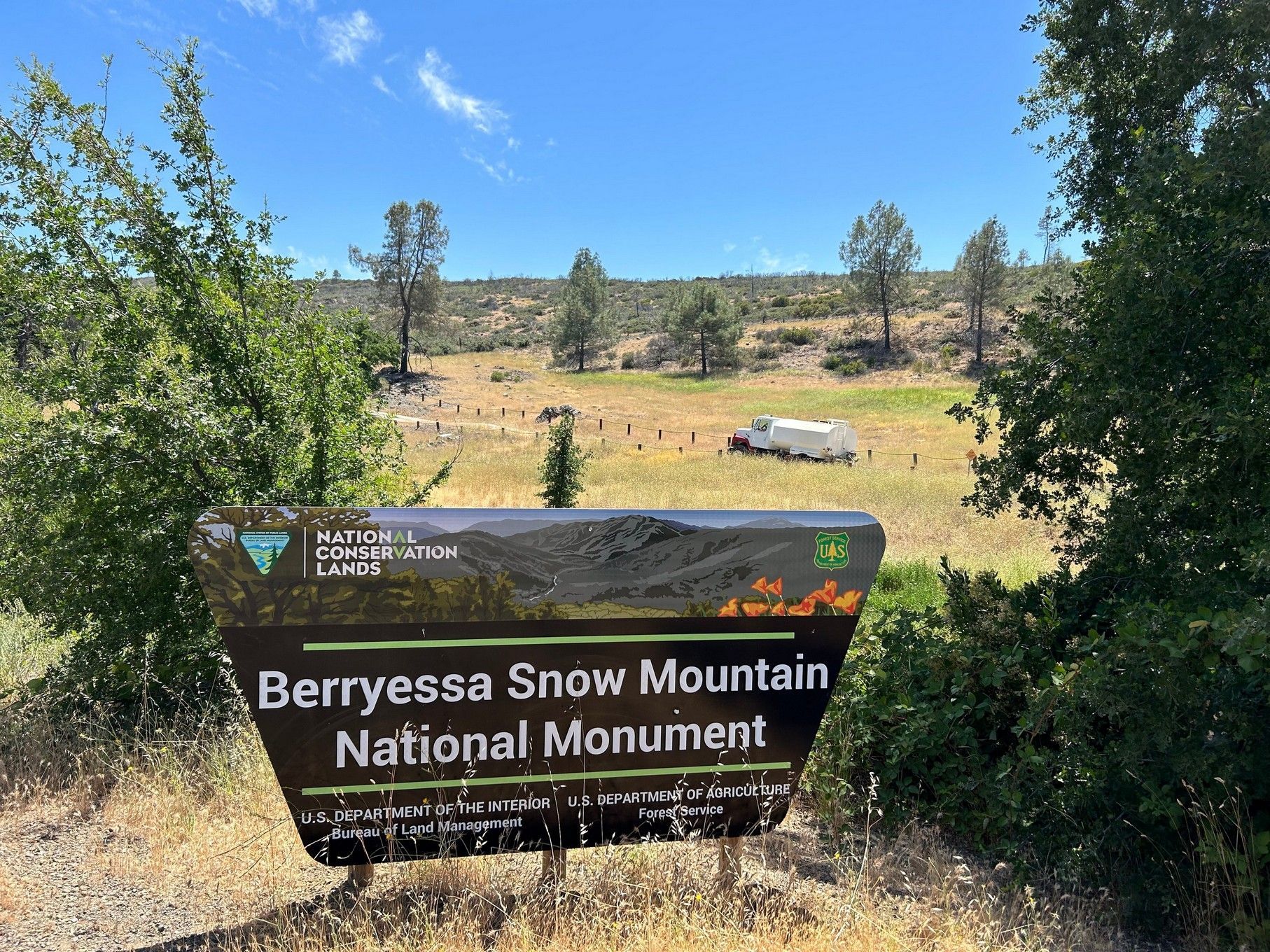
Work is progressing quickly at Knoxville Management Area! Contractors have been hard a work on both Cedar Creek Trail and the main trail – adding rolling dips, armored crossings, and other measures which will increase the durability of the trails.
The four-mile Cedar Creek Trail is closed through this coming winter, to allow the treatments to solidify with the rains. Seventy-one rolling dips were constructed over just two weeks of construction. Additionally, 30 sites were treated by replacing old culverts, armoring crossings with rock, and “outsloping” the trail to keep water flowing across the trail – preventing water from creating erosion gullies where it flows along the trail.
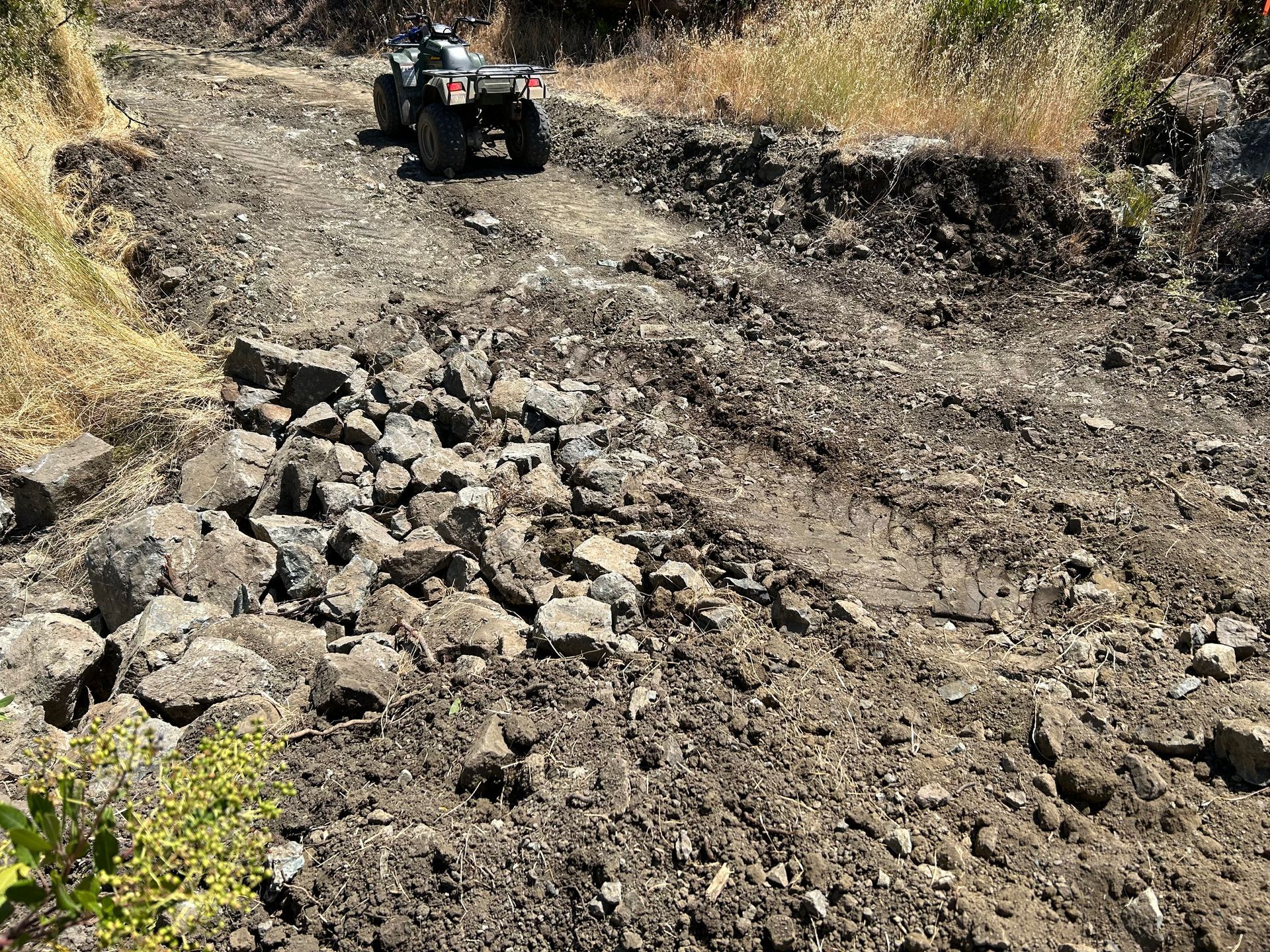
Work on the eight-mile main trail will continue into early August. Rolling dips are the most noticeable new features on the main trail as well. Riders should enjoy these new features – adding interest to the previously level (but heavily rutted) trail.
Volunteer workdays are being planned and will be announced soon. If you are interested in helping with the project, please contact Nate.
August 1, 2023 Update
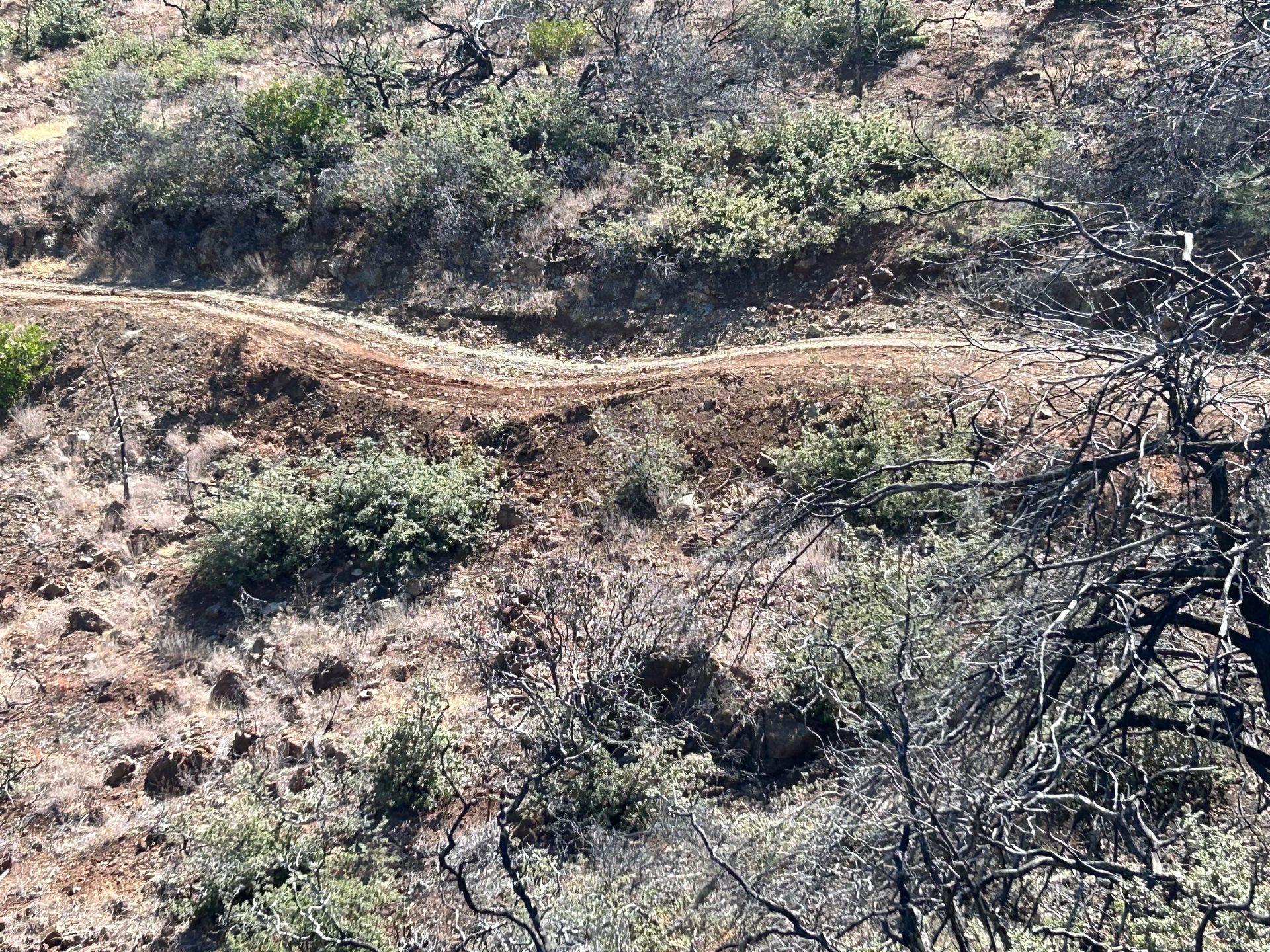
The four-mile Cedar Creek Trail and eight-mile main trail (Dunnigan Hill Road and Hunting Creek Road) at Knoxville have received many treatments to minimize erosion, increase the durability of the trail, and improve downstream water quality. Outsloping and rolling dips along the trail remove water from the trail quickly, preventing the formation of channels.
A common phrase when building trails is a little water in many places. Placing rolling dips at regular intervals decreases the amount of water flowing along the trail. This in turns decreases the speed of flow, meaning less erosive force.
In addition to the rolling dips, “armored crossings” were used where water flows across the trail; rocks are added to the crossing to stabilize the soil while keeping the flow within its channel. Armoring crossings can often replace culverts. Culverts allow water to flow under a trail but can become plugged by debris, melt – especially in fire-impacted areas like Knoxville – or collapse due to age. When this happens, water is backed up and is forced to find a new way to continue downhill, often causing large amounts of erosion. In contrast, armored crossings do not become plugged or collapse as they are open structures which remove water from the trail quickly.
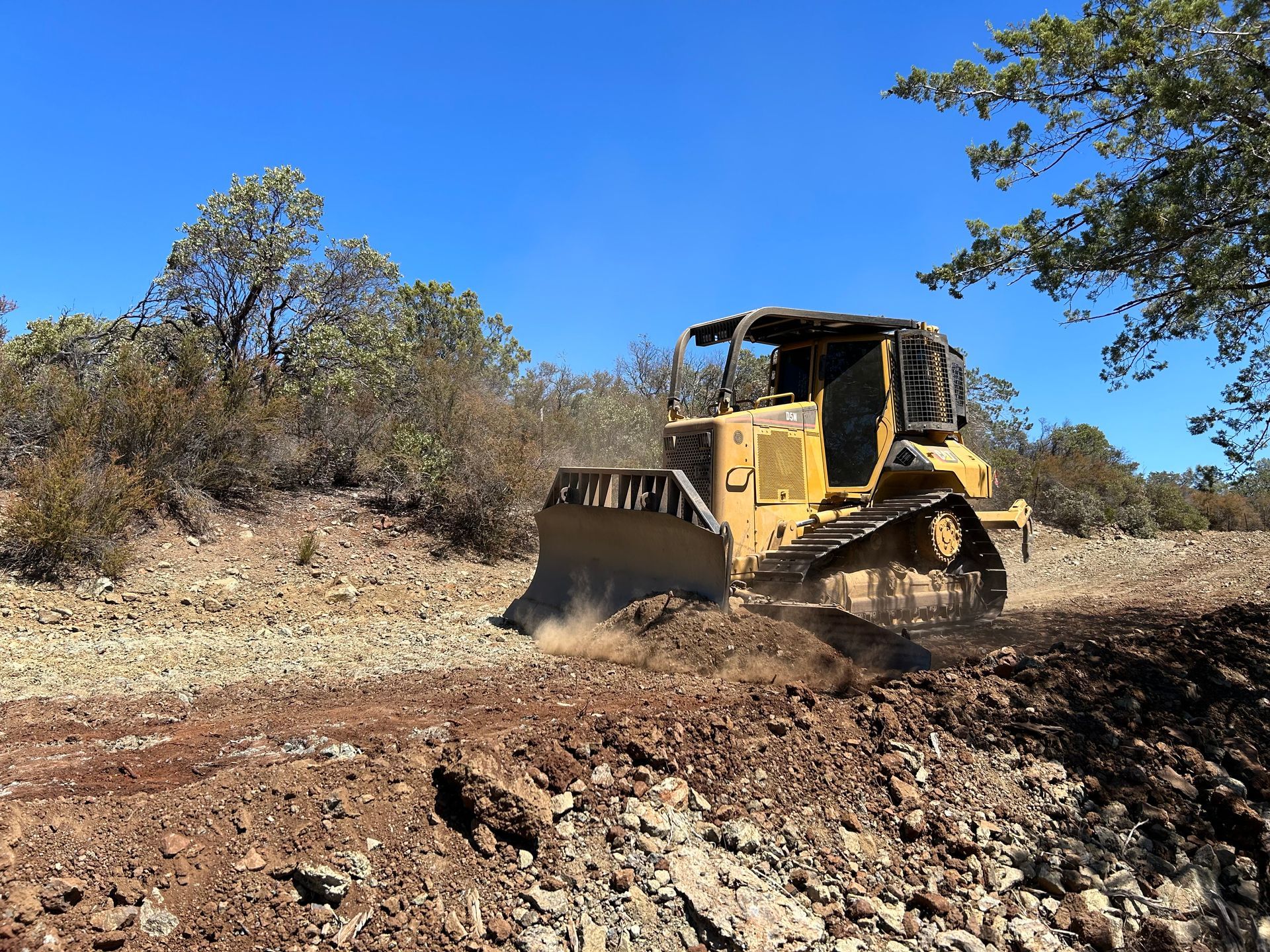
An additional, important benefit of stable trails is protecting cultural resources in the area. Tuleyome and our partners at the Bureau of Land Management have been coordinating with Native American tribes to protect sensitive areas. We are grateful for their partnership and knowledge of the area.
Cedar Creek Trail will be closed through the winter.
August 29, 2023 Update
Check out our latest Tuleyome Tale: The Importance of Trail Work at Knoxville Management Area by Nate Lillge.
July 17, 2024 Update
After a wet winter, the four-mile Cedar Creek Trail and eight-mile main trail (Dunnigan Hill Road and Hunting Creek Road) at Knoxville were assessed for performance of past treatments and to assess for any further work to improve road conditions.
All in all, the work completed thus far has performed admirably in maintaining road durability and mitigating erosion (and its cascading impact on downstream habitat and water quality). In some areas, the combination of heavy rain and subsequent OHV traffic left rutting in low points where water infiltration was slow.
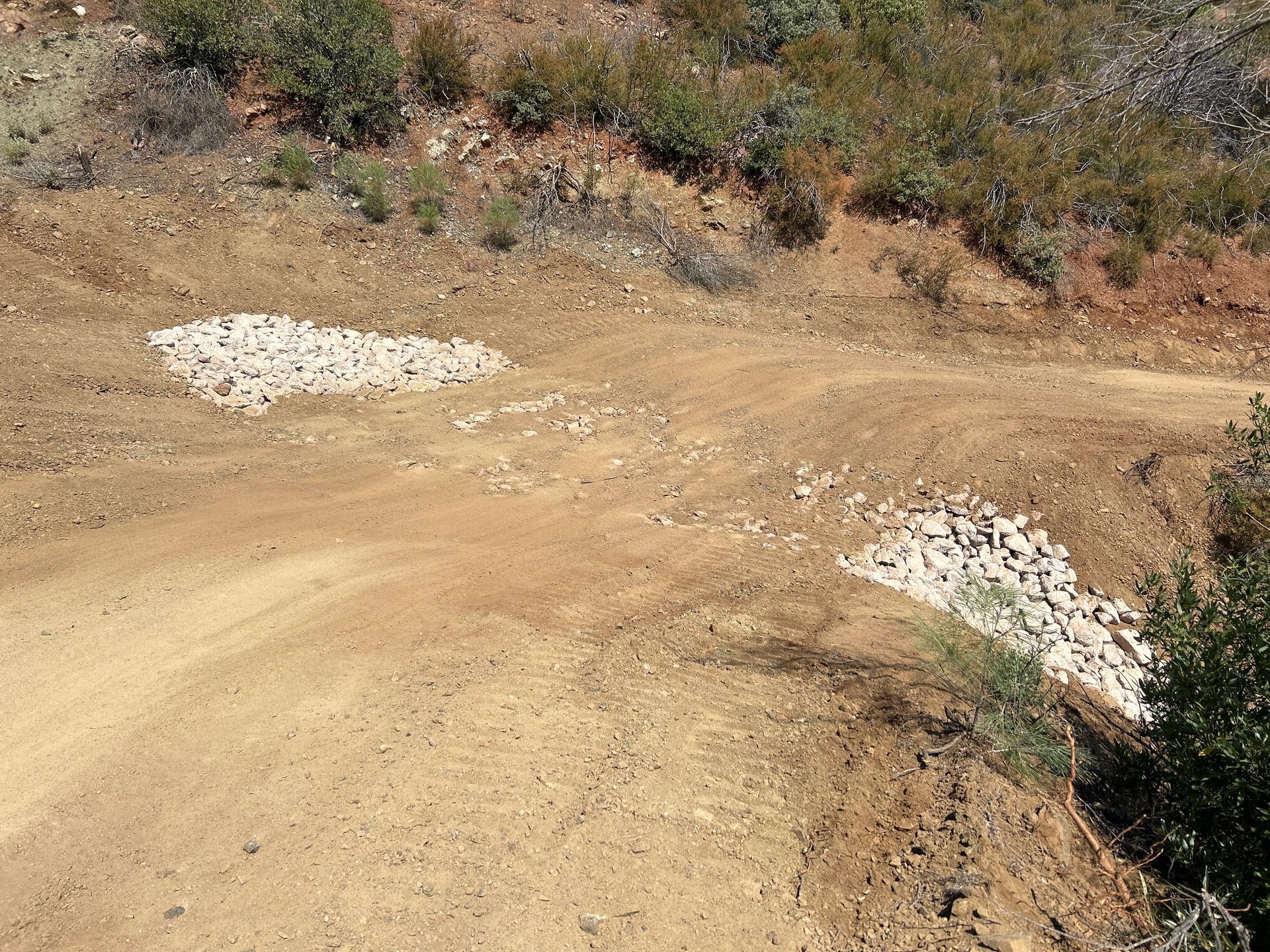
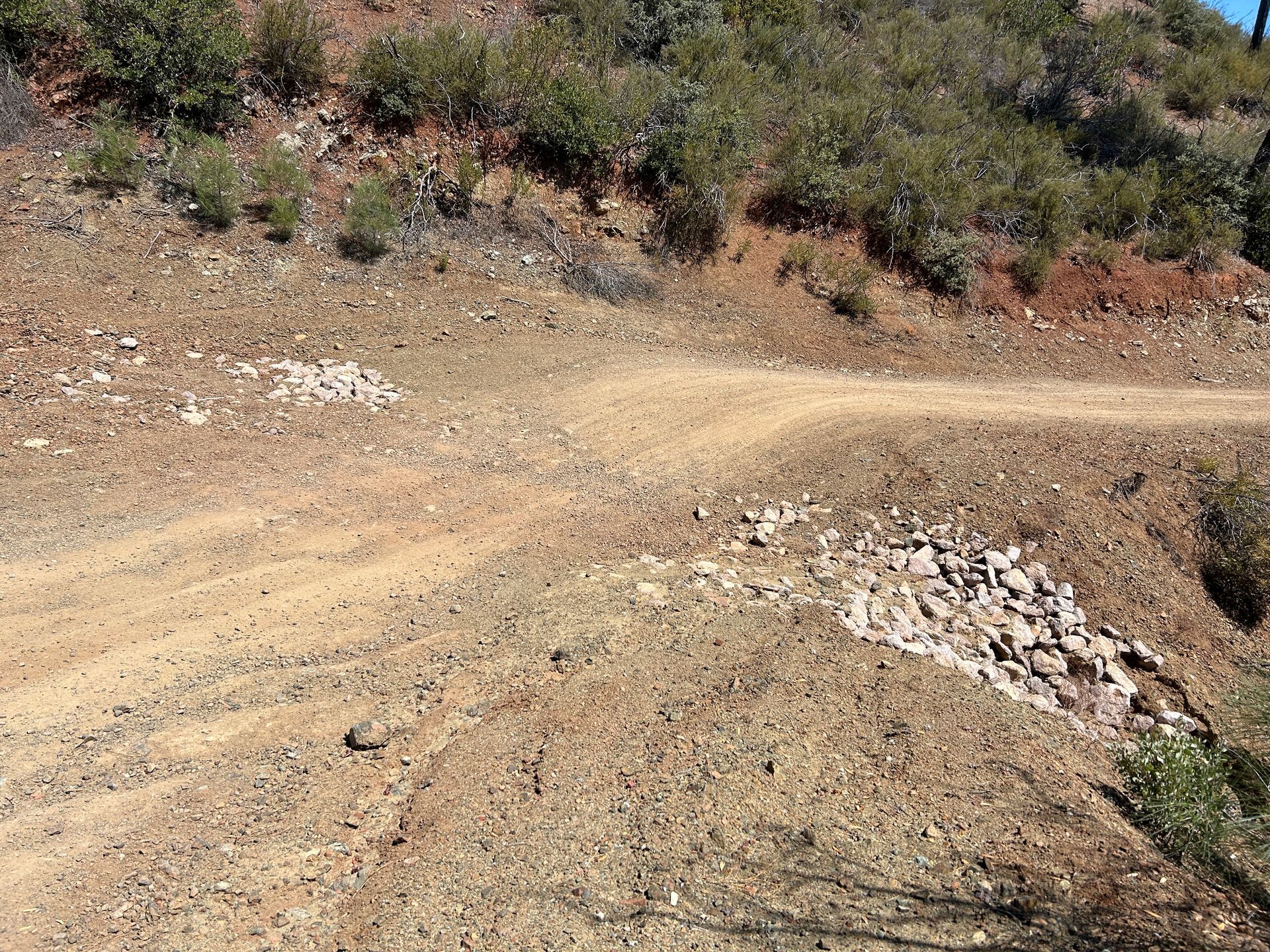
To address this, these sections were repaired and armored with rocks to provide greater structure and stability to mitigate rutting during the wet season. With all of this, the roads are much improved and ready for the coming season of use and enjoyment by the community.
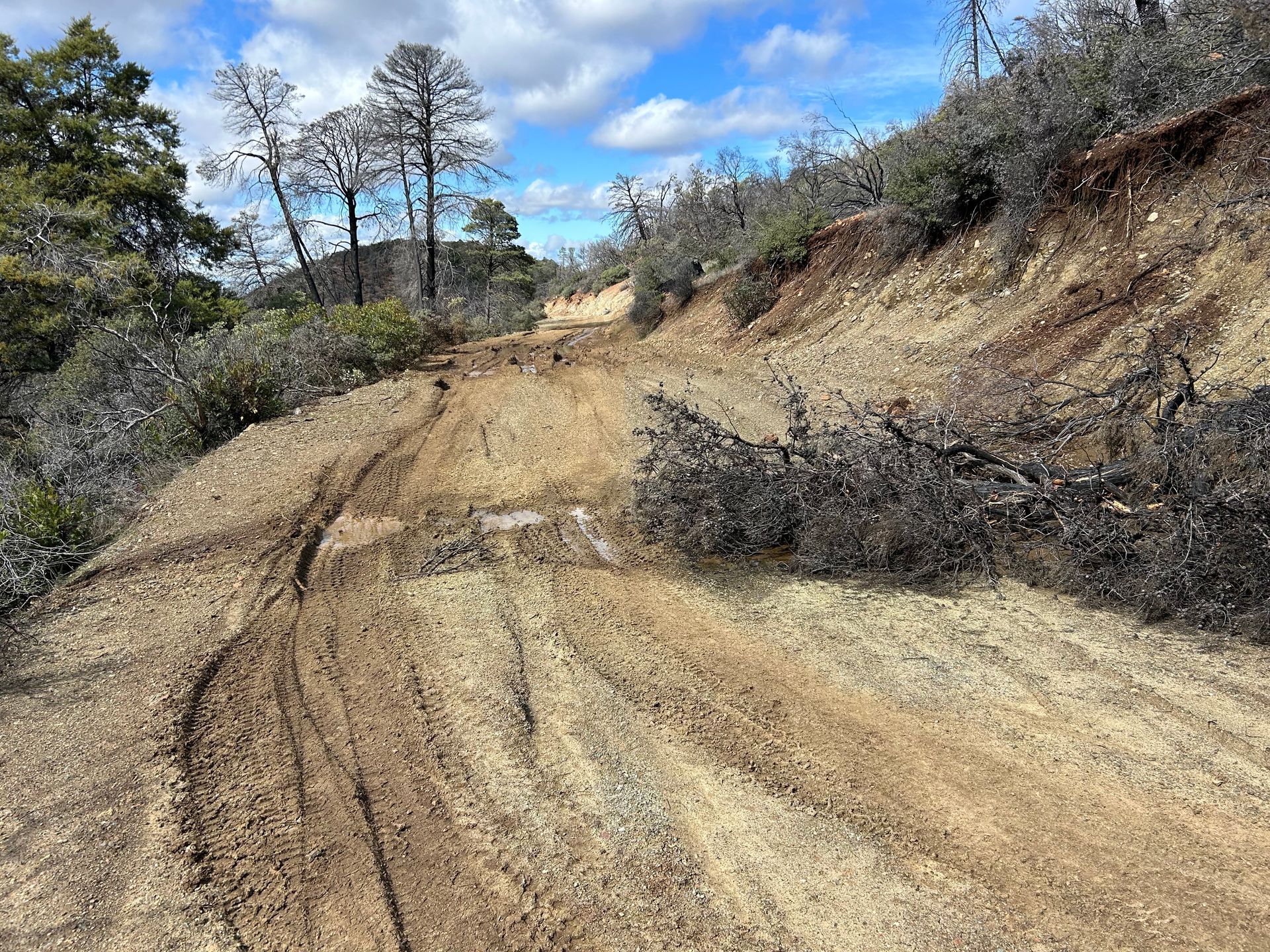
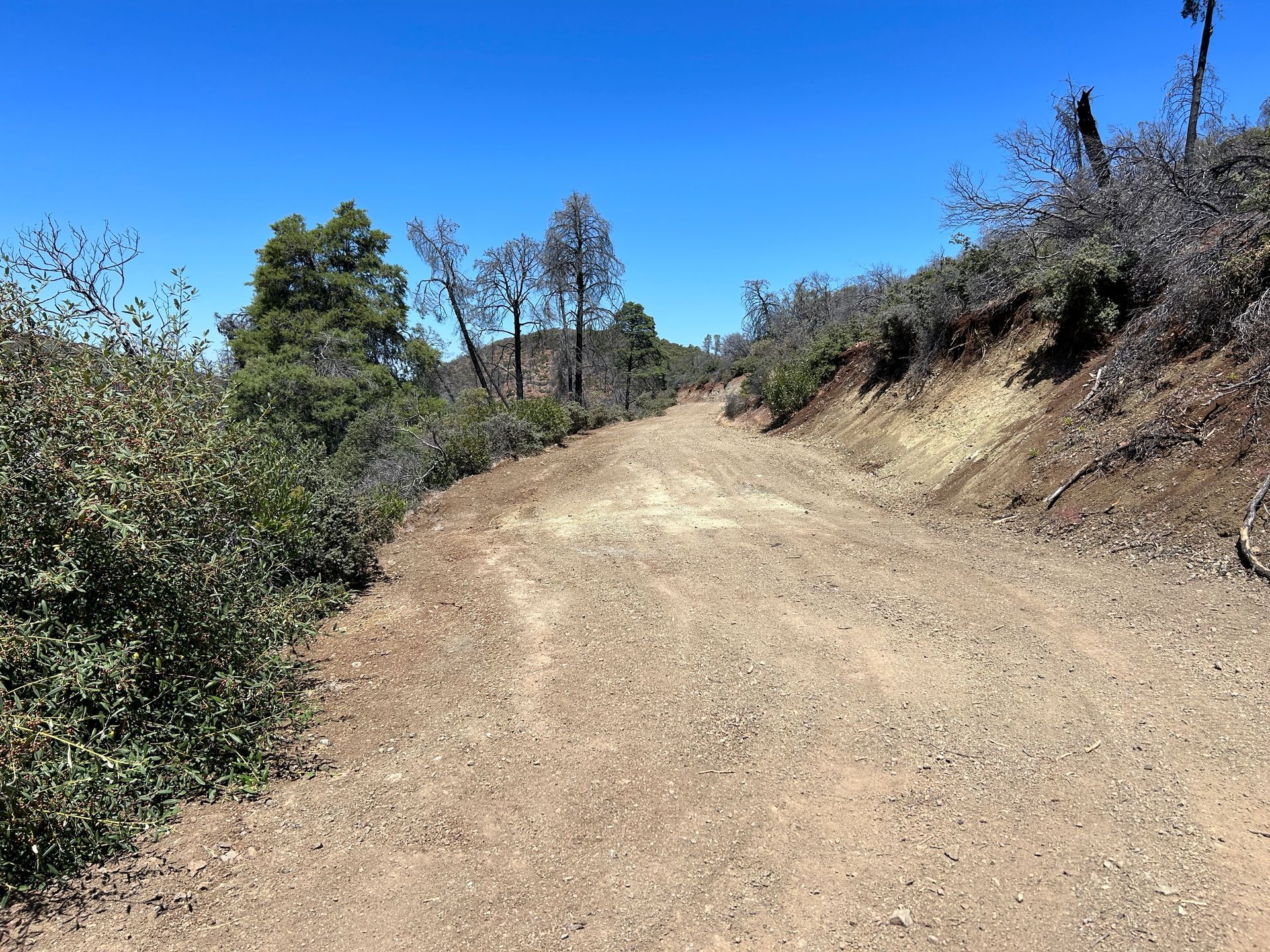
This project is now nearing completion, with one more volunteer day scheduled. Anyone interested in volunteering and joining us for the day can contact Nate (nlillge@tuleyome.org) or Roy (rblodgett@tuleyome.org) to get involved and experience this unique and valuable ecological community!



